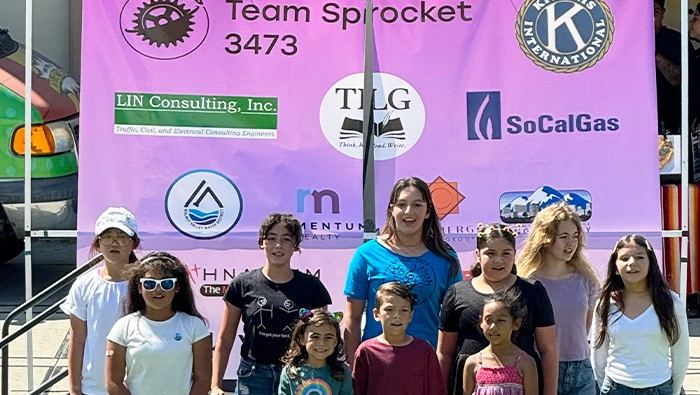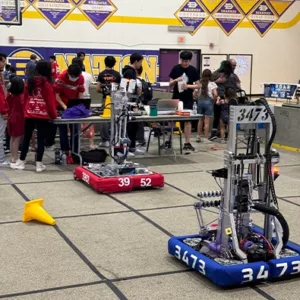
Microgrants fund beds, bookmarks and blooms
From January through March, the Kiwanis Children’s Fund helped smaller clubs fund big ideas.
By Erin Chandler
In the first three months of 2024, the Kiwanis Children’s Fund again awarded microgrants to clubs making a big difference with fewer members — giving away books, collecting supplies for kids in foster care, promoting inclusive outdoor play and more. Below, you can read about three projects that take an innovative approach to service in each of the Kiwanis cause areas: health and nutrition, education and literacy, and youth leadership development.
Health and nutrition
Sleep in Heavenly Peace
Members of the new Kiwanis Club of Wentzville, Missouri, U.S., know that a good night of sleep is essential for the health and development of a growing child. That’s why this club and the Kiwanis clubs of Lake St. Louis and Troy are partnering with Sleep in Heavenly Peace, which builds single bunk beds for children who don’t have beds to sleep in. The club has already participated in volunteer events to help construct beds. A Children’s Fund microgrant will help members purchase mattresses and bedding sets to accompany the newly built beds for 10 local children.
Education and literacy
Kiwanis Kids Day
When the Kiwanis Club of Willmar’s first Kiwanis Kids Day — held in celebration of the Minnesota, U.S., club’s 100th anniversary in 2023 — drew over 800 attendees and resulted in five new active members, the club decided to make it an annual event. In addition to food, entertainment and crafts, this year’s Kiwanis Kids Day will feature a service project in conjunction with United Way of West Central Minnesota. A Children’s Fund grant will pay for supplies kids need to make bookmarks using pressed, dried flowers. These bookmarks will go into hundreds of bags of “tools” that United Way gives out at preschool Early Childhood Screenings with the goal of engaging young learners. Each child who makes a bookmark will receive a free book to take home — so the project promotes literacy both for the children who receive the bookmarks and the children who make them.
Youth leadership development
P.E.A.C.E. (Positive Environment for Allowing Change and Engagement) Garden
The Kiwanis Club of May Pen, Clarendon, Jamaica, will use funds from a Kiwanis Children’s Fund microgrant to help establish the first of what members hope will be a number of “P.E.A.C.E. Gardens” at local primary schools. The project aims to address the increased violence in schools by creating an enclosed garden space — complete with seating, plants and flowers — that will serve as a tranquil setting for fun and reflection. P.E.A.C.E. Gardens are designed for mediation, peer counseling, mentorship and programs that promote positive values. The first garden at Toll Gate Primary and Infant School will be built and maintained by the club and the school’s K-Kids and Builders Club. May Pen Kiwanians hope students will internalize the garden’s lessons about managing their emotions and resolving conflicts.
How you can help
To learn more about Kiwanis Children’s Fund microgrants, visit kiwanis.org/microgrant-program.
If you want to amplify your impact to reach children around the world through the Kiwanis causes of health and nutrition, education and literacy, and youth leadership development, you can make a gift to the Children’s Fund or learn how your club can apply for a grant to help kids in your community today.



